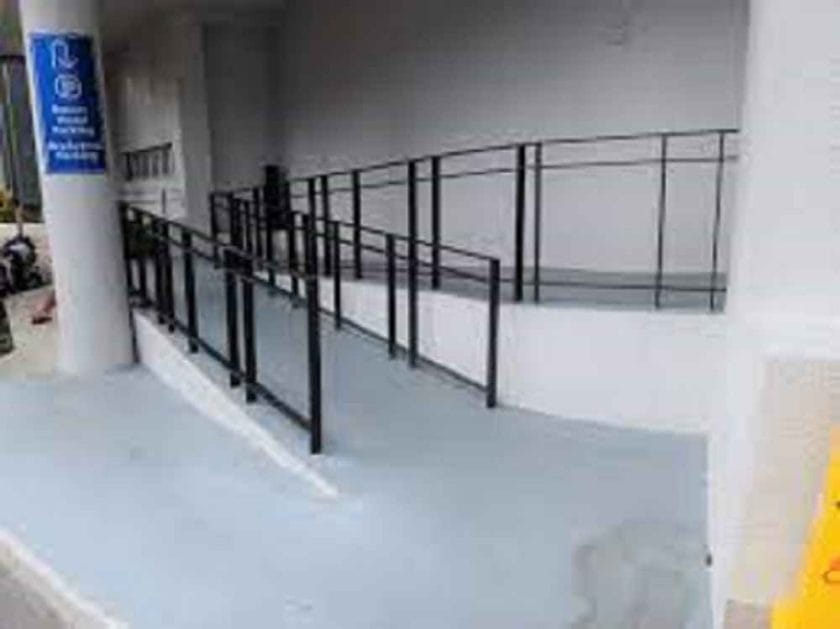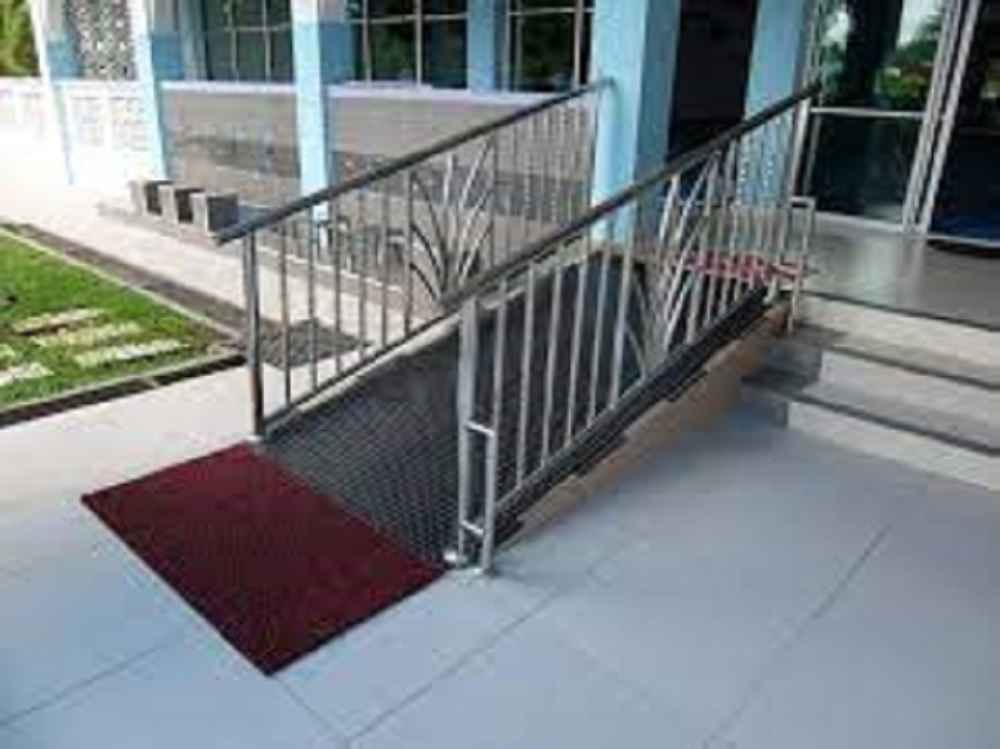Building a wheelchair ramp for a restaurant is an important step in making the establishment accessible to individuals with disabilities.
It is crucial for restaurants to provide equal access to all customers, including those who use wheelchairs, mobility scooters, or other mobility devices.
The purpose of this article is to provide a comprehensive guide for building a wheelchair ramp that meets the needs of the restaurant and its customers.
Understanding the Requirements for Wheelchair Ramps
One of the first steps in building a wheelchair ramp is to understand the requirements set forth by the Americans with Disabilities Act (ADA) and local building codes.
These guidelines help to ensure that the ramp is safe, accessible, and usable for individuals with disabilities.
ADA Guidelines
The ADA provides standards for accessible design that must be followed by all public accommodations, including restaurants.
According to the ADA, ramps must have a slope no steeper than 1:12, which means that for every one inch of rise, the ramp must be 12 inches long. Additionally, ramps must have a minimum width of 36 inches and must have handrails on both sides.
State and Local Building Codes
In addition to the ADA guidelines, it is important to understand the building codes in your area. These codes may set specific requirements for the height, slope, and length of the ramp, as well as the materials that can be used.
Height and Slope of the Ramp
The height and slope of the ramp are critical factors in making the ramp accessible and safe for individuals with disabilities. The ramp should not be too steep, as this makes it difficult for individuals with mobility devices to use.
The height of the ramp should also be appropriate for the entrance of the restaurant.

Landing Requirements
The ramp should have level landings at the top and bottom to provide a safe transition for individuals with mobility devices. The landing should be at least as wide as the ramp and should have enough space for a person in a wheelchair to turn around.
Choosing the Right Material for the Ramp
The material used to build the ramp is another important factor to consider. Some common materials used for ramp construction include wood, aluminum, and concrete.
Each material has its own advantages and disadvantages, and the choice of material will depend on the specific requirements of the ramp and the restaurant.
Wood
Wood is a common choice for ramp construction due to its affordability and availability. However, wood requires regular maintenance to keep it in good condition, as it is susceptible to weathering, warping, and rot.
Aluminum
Aluminum is a lightweight and durable material that is often used for ramp construction. It is resistant to weathering and does not require much maintenance, but it can be more expensive than other materials.
Concrete
Concrete is a durable and long-lasting material that is often used for ramp construction. However, concrete is heavy and difficult to work with, and it can also be more expensive than other materials.
Maintenance Considerations
Regardless of the material used, it is important to consider the maintenance requirements of the ramp.
Regular cleaning and inspections are necessary to keep the ramp in good condition, and any damage or wear should be repaired promptly to ensure the safety of individuals with disabilities.
Designing the Ramp
When designing the ramp, it is important to consider the space available and the specific requirements of the restaurant and its customers. The following factors should be taken into account:
Space Considerations
The ramp should be designed to fit within the available space and should not impede the flow of traffic in and around the restaurant. It is important to consider the surrounding landscape and architecture, as well as any other obstacles that may affect the design of the ramp.
Length of the Ramp
The length of the ramp should be appropriate for the height of the entrance and should provide a gradual slope for individuals with mobility devices. The ramp should not be too long, as this makes it difficult to use, but it should also not be too short, as this may result in a steeper slope.
Width of the Ramp
The ramp should have a minimum width of 36 inches to accommodate individuals with mobility devices, and it should also have enough space for a person in a wheelchair to pass another person.
Railings and Handrails
Railings and handrails are important safety features for individuals with disabilities, and they should be installed on both sides of the ramp. The railings should be sturdy and should be positioned at a height that is easy to grasp for individuals with disabilities.
Safety Features
In addition to railings and handrails, there are other safety features that can be incorporated into the design of the ramp. For example, slip-resistant surfaces, non-slip strips, and illuminated handrails can all improve the safety of the ramp.
Building the Ramp
Building a wheelchair ramp can be a complex and time-consuming process, and it may be necessary to hire a professional contractor to ensure that the ramp meets the requirements of the ADA and local building codes.
DIY vs. Hiring a Professional Contractor
If you choose to build the ramp yourself, it is important to have a solid understanding of construction techniques and the requirements of the ADA and local building codes.
If you are not confident in your ability to build the ramp, it may be best to hire a professional contractor.
Tools and Materials Needed
The tools and materials needed for ramp construction will depend on the specific requirements of the ramp and the material used. For example, if you are building a wooden ramp, you will need tools such as saws, hammers, and screws, as well as materials such as lumber, screws, and fasteners.
Step-by-Step Instructions for Building the Ramp
Building a wheelchair ramp involves several steps, including:
- Measuring the height of the entrance and determining the length and slope of the ramp
- Designing the ramp to fit within the available space and meet the requirements of the ADA and local building codes
- Acquiring the necessary materials and tools
- Cutting the materials to the appropriate size and installing the ramp
- Installing handrails and railings for safety
- Applying a non-slip surface or strips to the ramp for improved traction
- Inspecting the ramp to ensure that it meets the requirements of the ADA and local building codes
Safety Precautions
When building the ramp, it is important to follow safety precautions, including:
- Wearing protective gear such as gloves and safety glasses
- Following the instructions and guidelines provided by the manufacturer or contractor
- Using the appropriate tools and techniques to ensure the stability and safety of the ramp
- Regularly inspecting the ramp and making any necessary repairs
Maintaining the Ramp
Once the ramp is built, it is important to maintain it to ensure that it remains in good condition and safe for use.
This may include regular inspections, cleaning, and making repairs as needed. It is also important to keep the ramp clear of debris, ice, and snow to prevent accidents.

Conclusion
Building a wheelchair ramp is an important investment for a restaurant to make, as it helps to ensure that individuals with disabilities have access to the building and can fully participate in the dining experience.
By considering the specific requirements of the restaurant, designing the ramp with safety in mind, and following the guidelines of the ADA and local building codes, a restaurant can ensure that its ramp meets the needs of its customers and the community.
What is the minimum length required for a wheelchair ramp?
The minimum length required for a wheelchair ramp depends on the height of the entrance and the maximum slope allowed by the ADA, which is typically 1:12. For every 1 inch of height, the ramp must be at least 12 inches in length.
What is the minimum width required for a wheelchair ramp?
The minimum width required for a wheelchair ramp is 36 inches to accommodate individuals with mobility devices, and it should also have enough space for a person in a wheelchair to pass another person.
What materials are suitable for building a wheelchair ramp?
Common materials used for building a wheelchair ramp include wood, concrete, aluminum, and composite materials.
The choice of material will depend on the specific requirements of the ramp, such as weight capacity and durability, as well as personal preference and budget.
What safety features should be incorporated into the design of a wheelchair ramp?
Safety features that should be incorporated into the design of a wheelchair ramp include railings and handrails on both sides, slip-resistant surfaces, non-slip strips, and illuminated handrails.
These features improve the safety of the ramp for individuals with disabilities.
Can I build a wheelchair ramp myself or do I need to hire a professional contractor?
Building a wheelchair ramp can be a complex and time-consuming process, and it may be necessary to hire a professional contractor to ensure that the ramp meets the requirements of the ADA and local building codes.
However, if you have a solid understanding of construction techniques and the requirements of the ADA and local building codes, it may be possible to build the ramp yourself.

